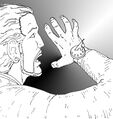Template:Selected anniversaries/August 31: Difference between revisions
No edit summary |
No edit summary |
||
| Line 62: | Line 62: | ||
||1949: André-Louis Debierne dies ... chemist and is considered the discoverer of the element actinium. In 1910, he and Marie Curie prepared radium in metallic form in visible amounts. Pic. | ||1949: André-Louis Debierne dies ... chemist and is considered the discoverer of the element actinium. In 1910, he and Marie Curie prepared radium in metallic form in visible amounts. Pic. | ||
||1950: Subbayya Sivasankaranarayana Pillai dies ... mathematician specializing in number theory. He contributed to the solution of Waring's problem. The Pillai sequence 1, 4, 27, 1354, ..., is a quickly-growing integer sequence in which each term is the sum of the previous term and a prime number whose following prime gap is larger than the previous term. Pic. | |||
File:Kurt Gödel.jpg|link=Kurt Gödel (nonfiction)|1950: Mathematician and philosopher [[Kurt Gödel (nonfiction)|Kurt Gödel]] addresses the International Congress of Mathematicians, in Cambridge, Massachusetts, on his work in relativity theory. | File:Kurt Gödel.jpg|link=Kurt Gödel (nonfiction)|1950: Mathematician and philosopher [[Kurt Gödel (nonfiction)|Kurt Gödel]] addresses the International Congress of Mathematicians, in Cambridge, Massachusetts, on his work in relativity theory. | ||
||1965: E. E. Smith dies ... engineer and author. | ||1965: E. E. Smith dies ... engineer and author. Pic. | ||
||1980: Arthur Sard dies ... mathematician, famous for his work in differential topology and in spline interpolation. His fame stems primarily from Sard's theorem, which says that the set of critical values of a differential function which has sufficiently many derivatives has measure zero. | ||1980: Arthur Sard dies ... mathematician, famous for his work in differential topology and in spline interpolation. His fame stems primarily from Sard's theorem, which says that the set of critical values of a differential function which has sufficiently many derivatives has measure zero. | ||
Revision as of 13:11, 5 April 2019
1635: Mathematician, theologian, and crime-fighter Marin Mersenne uses new theory of acoustics to detect and prevent crimes against mathematical constants.
1649: Architect Inigo Jones uses Vitruvian rules of proportion and symmetry to design buildings which are resistant to crimes against mathematical constants.
1897: Thomas Edison patents the Kinetoscope, the first movie projector.
1899: Georg Cantor writes to Dedekind, remarking that his "diagonal process" could be used to show that the power set of a set has more elements than the set itself.
1945: Mathematician and academic Stefan Banach dies. He was one of the founders of modern functional analysis.
1950: Mathematician and philosopher Kurt Gödel addresses the International Congress of Mathematicians, in Cambridge, Massachusetts, on his work in relativity theory.
2017: Signed first edition of The Eel Discovers Time Travel sells for two and a half million dollars."






